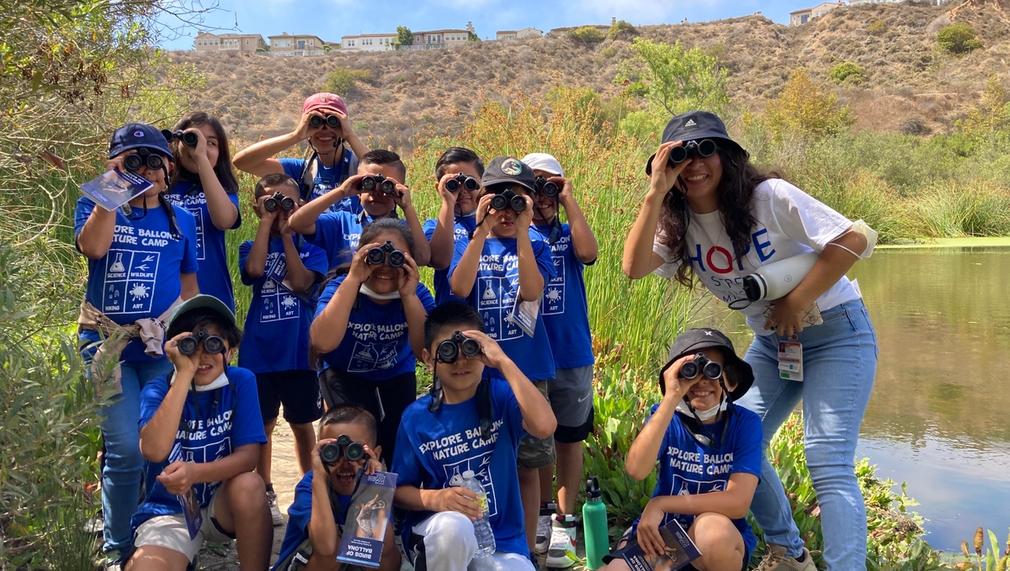Explore Ballona! STEAM Education Program
The Explore Ballona! STEAM Education Program is an immersive initiative dedicated to inspiring environmental stewardship and the acquisition of STEAM skills in students from throughout Los Angeles County. We bookend our experiential field trips with pre- and post- classroom visits that bolster teachers’ lesson plans and make us a strong partner to the LAUSD. We also partner with community-based organizations whose high school-age clients are invited to participate in a program component that culminates with paid internships at the wetlands.

What is the primary issue area that your application will impact?
K-12 STEAM education
In what stage of innovation is this project, program, or initiative?
Expand existing project, program, or initiative (expanding and continuing ongoing, successful work)
What is your understanding of the issue that you are seeking to address?
Environmental challenges impact everyone on the planet, and the March 2023 Sixth Assessment Report released by the UN Intergovernmental Panel on Climate Change once again sounded the alarm regarding our climate crisis, bringing to mind the adage Think Globally Act Locally. The previous year, the Los Angeles Unified School Board (LAUSD) had recognized this crisis when it unanimously approved a Climate Literacy resolution to enact a program that will help address the escalating climate crisis through education about environmental justice, green jobs, and correcting misinformation. Environmental education is needed not only to address existential challenges but also to promote STEAM skills among our students. Documented for its value to promoting critical thinking in young people, STEAM education prepares students for 21st Century careers in a marketplace that will become increasingly technological and competitive.
Describe the project, program, or initiative this grant will support to address the issue.
Explore Ballona! STEAM Education Program annually serves more than 6,000 local students, the majority of whom represent Title 1 schools and underresourced communities. Unlike nature camps and other outdoor programs, our program is immersive, giving it the distinct capacity to inspire interest in STEAM careers and life-long environmental stewardship. First, we share our Grades 1-6 Next Generation Science Standards (NGSS)-based curriculum with classroom teachers to support their educational strategies. Second, we make our staff available to those teachers to create linkages between classroom instruction and activities that are delivered during field trips in the wetlands. Third, we conduct dynamic field trips and eight week-long camps during the summer; and because this on-site programming features small-group learning, we are able to facilitate students’ capacity to make hands-on connections between classroom lessons and our natural environments’ need for human stewardship. Fourth, we encourage participants to work together to create their own community-based environmental sustainability projects that can engage their siblings, parents, and peers. Fifth, we offer a jobs training pipeline for high school students who indicate an interest in environmental work. And sixth, we encourage program participants to bring their families and neighbors to our weekend restoration events.
Describe how Los Angeles County will be different if your work is successful.
Our work already is making a positive difference, having become a vital part of classroom learning in no fewer than 59 LA County schools. And our commitment to scaling-up is indicated by our organizational growth: since 2017, our operating budget has grown from $431,916 to $924,800,a 114% increaseand a reflection of our having made educational programming a priority. The aforementioned LAUSD resolution to promote Climate Literacy validates our determination to expand programming. In the short-term, we will continue to grow our reach, ensuring that students in underserved areas with limited access to green space are provided with opportunities for hands-on experiential education that inspires environmental activism and a sense of community. In the long-term, we envision those students becoming increasingly engaged as they contribute to Los Angeles’ long-term environmental health while developing the skillsets that lead to gratifying careers in an increasingly competitive market
What evidence do you have that this project, program, or initiative is or will be successful, and how will you define and measure success?
We measure impact by tracking how participating schools and community-based organizations (CBOs) deepen their engagement with us. For example, a single classroom in an LAUSD school might first be introduced to our program through participation in a field trip. Then, 2-3 years later, several classrooms in that school not only are signing up for field trips, but they also are utilizing our curriculum in their classrooms and welcoming our staff for pre- and post-field trip classroom visits. Similarly, a CBO might first bring a group of their youth to a field trip, and later, once they have witnessed the depth of our on-site education, they request more intensive opportunities, and their youth enroll in our ECO Quest program, which introduces high school-age students to STEAM careers and leads to on-site summer internships in the wetlands. These levels of increased involvement among community stakeholders tell us that our program is of value and unique.
Approximately how many people will be impacted by this project, program, or initiative?
Direct Impact: 6,000.0
Indirect Impact: 12,000.0